63.5" so far this winter season in St. Cloud.
12.3" snow so far in March.
5" snow on the ground in St. Cloud as of Thursday evening.
- 1.9 F. March temperatures are running almost 2 degrees below average in St. Cloud, to date.
Flood Risk continues to rise, many Minnesota rivers will probably remain above flood stage through early May. Some observations and comments from Dan Luna, meteorologist in charge of the Twin Cities NWS Office below.
Much Too Early To Let Our Guard Down. On Thursday I e-mailed Dan Luna, MIC, Meteorologist in Charge, of the National Weather Service in Chanhassen, for his thoughts about the flood threat facing MInnesota. How has our recent storm impacted the overall risk? Will cold, sub-freezing nights through the middle of next week ease the risk of catastrophic flooding? Here is Dan's response:
"The flood potential remains as high as it was prior to the recent rain/snow and now cold air in place. This cold spell is a welcome sight in terms of mitigating possible record flooding. That is not to say the threat for record flooding does not exist, but this sure helps. While the MN River may not get as high as we were forecasting earlier this week, due to the tremendous cold spell and slush/water freezing in place in fields, ditches and small creeks, we expect it will have a secondary crest later in April. There is no doubt that the magnitude of that crest will be determined by how fast the remaining snow and ice melts and more significantly if we receive a big rainfall, on the order of 2 inches or more.
For the Mississippi, the threat is high and it is more of a wild card, since very little snow melted in the upper basin - say above St Cloud - in fact we added significant snow to that basin with this last event. We will have to see how fast that snow melts and if we receive a rain event during melt. If we were to see a fast melt throughout the state and a significant rain event coupled with the melt, the probability for record flooding at St Paul would be right back where we were one week ago.
The Red River has higher threat of major flooding than before due to the added snow fall - significant snow fall.
As you know the weather is going to be quiet and cold. That is good on one hand, and on the other that pushes us further into April when we can receive larger rain amounts.
We are far from over with the threat of significant flooding. In fact that threat will be with us through May due to the fact that there is tremendous water in the river system and soils, and it will take weeks to flush that out, assuming we get minimal rain during that entire period. As we both know, the last 12 months have not featured normal or routine rain/snow amounts/events in the Midwest - they have featured very big storms. That should be cause for concern for the next month, perhaps longer."
Paul: "Are you as concerned about the potential for serious river flooding as you were two weeks ago?"
Dan: "Yes I am. I believe it is too premature to claim a victory if you will. Any significant rains between now and end of May will run off for the most part, so we need to be vigilant!"
Weather Complications. This is a
map showing (liquid) precipitation over just the last 7 days. The yellow-shaded area denotes 2-3" precipitation (which fell as a mix of rain, ice and snow). The heaviest amounts fell from near St. Cloud to the northern suburbs of the Twin Cities (mostly as snow) - and southeastern MN and southwest Wisconsin (where rain was the rule). Again, the ground is not only frozen, but saturated after a record wet 2010. The result: any melting snow will run off almost immediately into Minnesota's streams and rivers.
A Few Flurries. Mammoth Donner, in California, has been essentially shut down by a parade of Pacific storms in recent weeks, each one dumping 2-5 feet on higher terrain. 30 foot snow banks? I've never seen this much snow (at least in the USA). Details below.
Big Numbers. Patrick Hammer tweets that Hutchinson, Minnesota has already picked up 98.9" of snow this winter season. Reminder: the all-time record for snow at MSP is 98.6", set in 1983-84. I still think we'll wind up in the Top 3 spot. Not sure we'll surpass 1984, but we may come close. At 84.6" this is already the 5th snowiest winter since 1891.
More Big Numbers. The same storm that dropped 7.1" on St. Cloud unleashed up to 19.5" on parts of North Dakota. Details from the NWS
here.
Good News. This is a best-case scenario for Minnesota's flood potential: a very gradual warming trend, daytime highs above freezing (permitting some melting during the daylight hours), but nighttime temperatures dip below freezing every night through the end of next week, slowing down the rate of melting between sunset and sunrise. No dramatic warming trends are likely, although highs in the mid 40s in early April will accelerate snowmelt up north - this is why the flood risk may be with us for the next 6 weeks.
Next Chance of S-S-Snow? Thanks Paul. You had to bring up that dirty little 4-letter word. At least the latest GFS computer run takes next Tuesday's storm farther south, still capable of brushing southern Minnesota with a little slush. Earlier runs were hinting at a "plowable" accumulation over the southern third of the state (including the Twin Cities). We'll keep an eye on this - with any luck we'll catch a break and a band of heavy snow will set up over Iowa. Stay tuned.
Cool And Quiet Through Monday. That's the good news, no weather-drama for the next 3 days. The 12z Thursday run of the GFS (solid lines on the graph) were hinting at (controversial, unspeakable) amounts of snow. I won't even utter the amount. But the 18z run pulls the amounts WAY down, only an inch or two of slush. Too early to panic (or celebrate, for the one or two Minnesotans who want MORE snow).
Flood Levees In Des Moines Will Now Need To Be Even Higher. The Des Moines Register has an
article about the levees protecting the city; the need to raise them even higher to prevent widespread flooding. Which brings up a dilemma. The higher you make the levees, the faster the water has to flow, which increases the potential for flooding downstream of those (higher) levees. So by protecting cities you inevitably increase the potential for severe flooding miles downstream, in the suburbs and farmland. Robbing Peter to pay Paul? Details: "
Flood levees that are being rebuilt in Des Moines need to be even higher that engineers planned. New data that show a greater risk of severe flooding along the Des Moines River have prompted federal officials to increase the height of the new Birdland and Central Place levees. The reconstructed levees were already designed to be taller and wider in most places than their predecessors. However, the new designs were completed in January 2010, several months before the U.S. Army Corps of Engineers could work with the findings of a new river flow study of the Des Moines River. That study shows the Des Moines River has risen higher and more often in recent decades. Major floods like those in 1993 and 2008 are more likely in the future than previously thought, according to the study."
Snow Blast! Super Sierra Snow. Think we've seen a lot of snow? This is minor league snow, compared to what the west coast has endured in recent weeks. Meteorologist Tim Ballisty from the Weather Channel has a great summary of the record snows that have shut down parts of the west. At least 3 separate ski destinations have picked up over 600" of snow so far this winter! Ski resorts closing because of TOO MUCH snow? Amazing, but true: "
As you can imagine, with little snow melt during the winter, that snow has to go somewhere and that "where" is up. The accumulating snow is reaching extraordinary heights. This slideshow should give you a good sense of just how much snow we're talking about...A LOT! The above image is from Tahoe Donner where feet upon feet of snow must be carved and plowed away so road travel can continue and skiiers and snowboarders can reach their favorite resort of their choice. (Image credit: yfrog.com, twitter.com/Snowboardermag) There is not let up from the storminess across the West. Several more Pacific storms will crash into the region this week and through the upcoming weekend adding even more snow to the already more-than-impressive snow totals."
Worst Texas Drought In 44 Years Hits U.S. Wheat, Beef Supply. Bloomberg has a
story about severe drought conditions plaguing much of the south, especially Texas: "
The worst Texas drought in 44 years is damaging the state’s wheat crop and forcing ranchers to reduce cattle herds, as rising demand for U.S. food sends grain and meat prices higher. Texas, the biggest U.S. cattle producer and second-largest winter-wheat grower, got just 4.7 inches (12 centimeters) of rain on average in the five months through February, the least for the period since 1967, State Climatologist John Nielsen- Gammon said. More than half the wheat fields and pastures were rated in poor or very poor condition on March 20. Dry conditions extending to Oklahoma, Kansas and Colorado may cut crop yields in the U.S., the world’s largest exporter, as too much moisture threatens fields in North Dakota and in Canada. Wheat futures in Chicago are up 50 percent in the past year, after drought in Russia and floods in Australia hurt output and sent global food prices surging. Wholesale beef reached a record this week, and the U.S. cattle herd in January was the smallest since 1958."
It Could Happen Here. In light of the nuclear disaster in Japan many people are rethinking nuclear energy. I'm not sure how we can get to a sustainable, mostly-renewable energy-future without some level of (safe) nuclear, although I realize the term safe nuclear is an oxymoron. You can reduce risk, but never entirely eliminate risk, as outlined in this
story in the New York Times:
It will be years before we know the full consequences of the disaster at the Fukushima Daiichi nuclear power plant in Japan. But the public attention raised by the problems there provides an opportunity to rethink nuclear-power policy in the United States and the rest of the world — and reduce the dangers of a similar disaster happening elsewhere. From one perspective, nuclear power has been remarkably safe. The 1986 Chernobyl accident will ultimately kill about 10,000 people, mostly from cancer. Coal plants are much deadlier: the fine-particulate air pollution they produce kills about 10,000 people each year in the United States alone. Of course, for most people this kind of accounting is beside the point. Their horror over even the possibility of a meltdown means that the nuclear-power industry needs constant and aggressive regulation for the public to allow it to stay in business."
Reflections On Fukushima. A Time To Mourn, To Learn, And To Teach. Phycisist Robert Socolow
reflects on the tragedy in Japan, lessons to be learned, and what it might mean for America's energy future. Here is an excerpt from thebulletin.org: "
As a physicist, I have spent my life hoping that nuclear power could realize its potential. My teachers were scientists who had penetrated the nuclear world for the first time. They told those of us who were studying physics in the pre-1960s era that we could have all the fun they had had, as the domain of analysis moved down in scale from the nucleus to the hadrons and leptons of the sub-nuclear zoo. But, with that fun, came a second assignment: Our generation had to ensure there was no further use of nuclear weapons. My contemporaries and I were socialized to believe that nuclear physics could bring humankind amazing insights into our past via precise dating and powerful tools of diagnostic and therapeutic medicine -- but nuclear physics, we were taught, also could bring attractive energy sources. The triad of nuclear power weaknesses -- safety, waste management, and couplings to weapons -- was a surmountable challenge. The decoupling of nuclear power from nuclear weapons, in particular, seemed to generate an agenda that would compel stronger international governance and a path toward non-reliance on nuclear war."
Panic May Slow Nuclear Energy In China. Here's another NY Times
article focusing on the fallout from the March 11 nuclear disaster in Japan: "
Nuclear fear has struck in China, a country of 1.3 billion with the world’s most ambitious nuclear power plans, in response to the unfolding crisis at the Fukushima Daiichi plant in Japan. Across the nation, panicked Chinese stormed stores last week for iodized salt, in the apparent belief that it would offer protection from possible radiation leaks in Japan, 2,000 kilometers, or 1,200 miles, to the east. When iodized salt ran out, they bought iodine-free sea salt. Then, even more bizarrely, soy sauce. State-run news media and doctors pleaded with the public to stop, saying that radiation had not been detected in China, and warning that a person would have to eat several kilograms of iodized salt to ingest the required amount of iodine, inducing vomiting, or even death. Yet panic persisted. Chinese customs even changed. “Instead of our traditional greeting ‘Have you eaten?’ I heard people saying ‘Have you bought salt?’ It was so ridiculous,” said a woman waiting in line at a cellphone shop, who gave her surname as Zhang."
Tracking Global Light Pollution. Wired magazine has an interesting
article about "light pollution", the spread of metropolitan areas around the USA, interfering with a clear look at the nighttime sky. It's a real problem for astronomers, and anyone hoping to get a peek at Jupiter or the Northern Lights. Citizens are being "drafted" to help track the spread of these glowing, incandescent lights around the USA: "
You can help build the best global map of light pollution, the uniquely modern problem that has stolen starlight from most of the urbanized world. From March 22 through April 6, the GLOBE at Night website will collect the public’s measurements of the night sky. Anyone can participate by comparing their local view of specific constellations with magnitude charts on the site. The event is in its sixth year, and organizers hope to surpass the 17,800 observations they collected in 2010. “With half of the world’s population now living in cities, many urban dwellers have never experienced the wonderment of pristinely dark skies and maybe never will,” says the GLOBE at Night. “This loss, caused by light pollution, is a concern on many fronts: safety, energy conservation, cost, health and effects on wildlife, as well as our ability to view the stars.” Light pollution is caused by stray artificial light from sources that are too bright, poorly aimed or both. Similar to how sunlight makes the sky glow blue, artificial light scatters in the atmosphere to create a dull glow that obscures stars and celestial objects. Airborne pollutants exacerbate the problem."
Gadgets You Should Get Rid Of (Or Not). Who hasn't encountered "gadget creep"? We want more RAM, more megabytes, more Gbytes of memory, more pixels, and now 3-D? You inevitably wind up with a drawer (closet?) full of "old", discarded gadgets that no longer make the cut. What to keep, what to throw out, what to recycle? The New York Times has a few
suggestions: "
The common rap against technology is that it leads to an accumulation of devices. But the nature of technology is changing. Fewer products are doing more tasks — all accomplished by countless lines of massless software code.And so we no longer need to accumulate products. If anything, we can cut down. The question is, Which can be replaced and which are fine, or even preferable, to keep? It is plain as day that paper maps and Rolodexes have given way to their digital counterparts. But what else can you get rid of? Here is a list of common consumer technologies and products and a somewhat opinionated judgment on whether to keep or pitch it."

 Chilled Sunlight
Chilled Sunlight. Under a bright blue sky daytime highs were more than 10 degrees cooler than average, ranging from 27 at Redwood Falls to
31 in St. Cloud to 33 in the Twin Cities, where there's 4" of snow on the ground.
 Paul's SC Times Outlook for St. Cloud and all of central Minnesota:
Paul's SC Times Outlook for St. Cloud and all of central Minnesota:
TODAY: Some sun through high clouds. Winds: E 10-15. High: 32
FRIDAY NIGHT: Mostly cloudy, wet snow passes south over Iowa. Low: 15
SATURDAY: Storm stay south, patchy clouds. High: near 30
SUNDAY: More sun, still cool for late March. Low: 17. High: 33
MONDAY: Sunny start, clouds increase later. Low: 22. High: 40
TUESDAY: Chance of wet, slushy snow, especially far southern MN. Low: 26. High: 36
WEDNESDAY: Clouds, lingering flurries. Low: 25. High: 39
THURSDAY: More clouds than sun, milder. Low: 29. High: 42
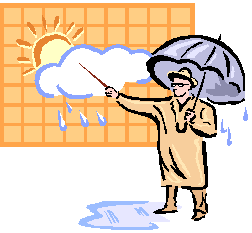
Outlook: Confusion
"The trouble with weather forecasting is that it's right too often for us to ignore it and wrong too often for us to rely on it," quipped Patrick Young. How is it possible to check 10 different sources and get 10 different forecasts? It all boils down to interpretation. In America meteorologists are free to view model data and come up with their own predictions of what may happen, based on past experience (and gut feel). Try that in Japan or Europe - and you may wind up getting into trouble. Forecasters there are required to issue the official, government outlook.
The one area we all put competitive pressures aside is severe weather. When NOAA issues warnings everyone bands together and disseminates the same bulletin. The reason? Studies show that when the public gets conflicting warnings they're more apt to sit on their hands and do nothing.
Good news: nighttime lows dip below 32 through the middle of next week, slowing the rate of snow melt, which may ease the threat of (extreme) flooding. Check the weather blog for flood updates. A southern storm may brush us wet snow next Tuesday, then back into the 40s by late next week; 50s return the first week of April. Spring!
Snow In Spring? Why A Cold March Doesn't Disprove Global Warming. I get this question a lot: if the atmosphere is gradually warming over time, how can it be this cold/snowy in "spring"? The reality: at any given time parts of the planet or unusually cold, while others are unusually warm. An
article in LiveScience has a thoughtful, scientifically-sound explanation: "
It's the first week of spring, and yet many East Coasters woke up this morning to freshly fallen snow. Isn't that counter to the fact that the Earth is experiencing a warming trend? "People make the mistake of equating weather in their location with global warming or climate change," said David Easterling, chief of the Scientific Services Division at the National Oceanic and Atmospheric Administration's National Climatic Data Center. "But the answer is that even with a warming planet, you're always going to have some places that are unusually cold for a day, or even a month, while at the same time other areas are unusually warm." That type of variation was apparent on the global scale in February, Easterling said. In that month, New York City was slightly colder than average, but areas around it were unusually warm. While the western part of North America was unusually cold, Alaska was warmer than average. Similarly, a colder-than-normal Europe was offset by unusually warm temperatures in China, India and central Siberia. "What we're dealing with now is weather as opposed to climate," Easterling told Life's Little Mysteries. Even by 2050, when the Earth is projected to be warmer, we'll still get an occasional cold air outbreak in the eastern states. "It just won't happen as frequently," he said."
Top 7 Strategies to "Cure" Global Warming. I'm not sure cure is the right word. Mitigate might be a better word. To some degree we're already in a position where we'll have to adapt to some degree of future warming, based on the amount of greenhouse gases already floating over our heads (CO2 and methane retain their heat-trapping characteristics for nearly a century). CSRwire has a few
suggestions on policies that might help
1. Smart Subsidies: The free market doesn't reign in energy, nor should it. It can't price carbon correctly because it leaves out the costs we all bear collectively, like environmental destruction and damage to our health. Since the free market can't price carbon correctly by itself, government policies need to help the market by rewarding technologies that lessen the cost to society and our environment and punishing those that increase it: R&D subsidies to responsible new technology; clean energy and efficiency rebates to consumers; heavy taxes on profits of fossil fuel companies; and an end to subsidies and loan guarantees to dicey modalities like nuclear, ethanol and gas.
2. Smart Standards: We need to develop common sense standards for new technology so we don't go halfway down the road to hell paved by our good intentions. The precautionary principle has been adopted by the EU to ensure new chemicals don't get introduced into industrial processes before they are proven safe. It wouldn't have taken all that much time for scientists and eco-economists to figure out that corn ethanol violates the precautionary principle. All the billions of dollars wasted on that dead end could have given us a jumpstart on safer forms of biofuels, from algae to switchgrass -- and ones yet discovered.
The Union of Concerned Scientists has developed these "Bioenergy Principles" to guide R&D and investment in alternative fuels. A national renewable energy standard would also be smart, enabling innovative technologies to be developed with a national market in mind and improved predictability for investors.
3. Smart Efficiency: Some criticize efficiency efforts, pointing out that while vehicle efficiency has increased, overall vehicle emissions have stayed the same, because people are driving more. Increasing use as efficiency goes up is called the Jevons effect; it's real, but doesn't apply everywhere and can be minimized. For example, making buildings more energy efficient will decrease total emissions because people won't jack up the heat or AC beyond the level of comfort. Engineering solutions like smart lighting that goes off when no one is in a room makes efficiency easy, as does architecture that increases available daylight."
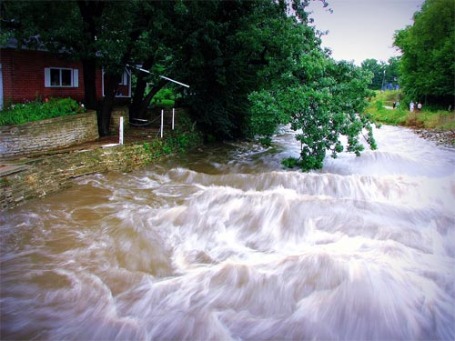
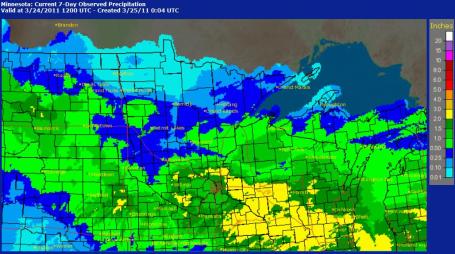
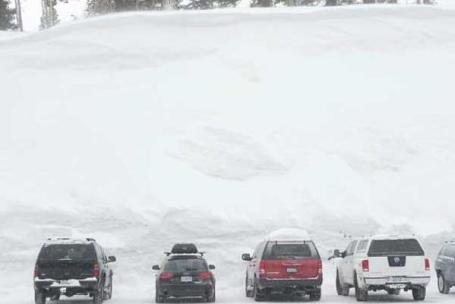
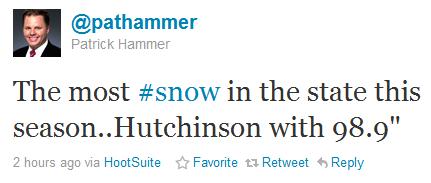


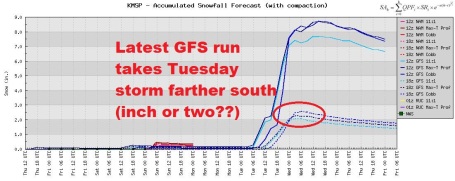
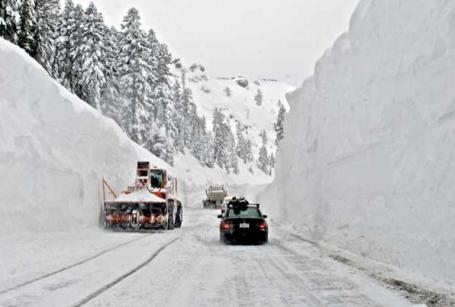


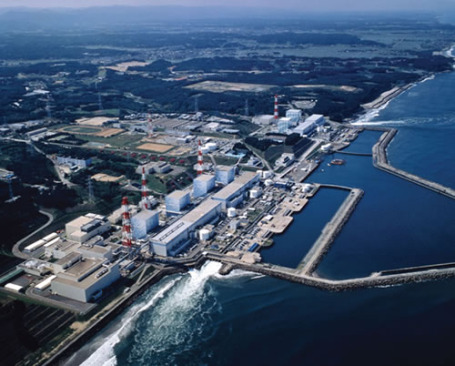

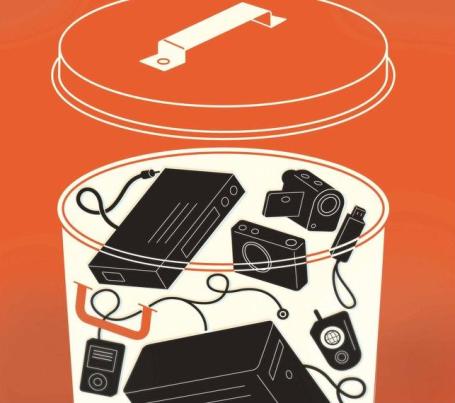




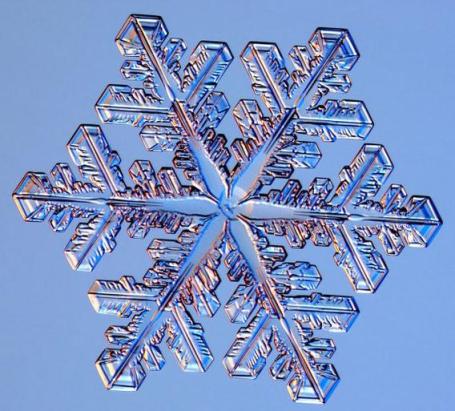


No comments:
Post a Comment